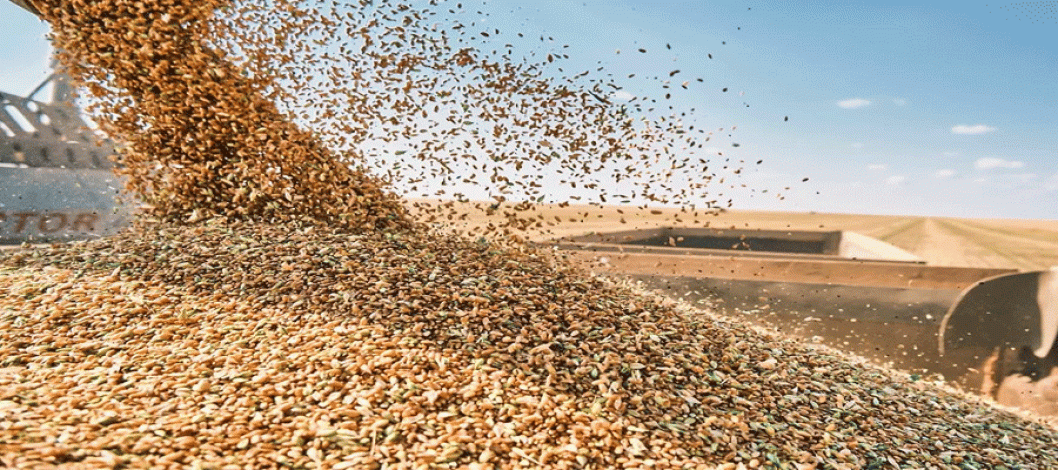
File Photo
Brazil has significantly increased its wheat production in recent years, moving towards self-sufficiency, but it still relies on imports to meet domestic demand. While Brazil's wheat production has nearly doubled in the last five years, it also remains a major wheat importer, particularly of wheat gluten used in pet food. Brazil is a leading grain producer and exporter, producing on average 6.6 million tons (Mt) of wheat per year from 2013 to 2023 [1]. However, to meet its average annual domestic consumption of 11.1 Mt over the same period, the country continued to rely on imports of 4.5 Mt of wheat each year. This dependency on imports leads to high wheat prices in Brazil compared to the global average. Notably, in years when domestic wheat production is low, such as 2012, prices in Brazil can surge to 90% higher than the global average, with the risk of pushing millions of Brazilians into hunger. To reduce the impact of external dependence and wheat price volatility, the country needs to increase domestic wheat production.
Increased Production:
Brazil has seen a significant increase in wheat production, nearly doubling in the past five years, which has led to a decrease in imports and an increase in exports for the 2022/23 season. Despite this self-sufficiency in wheat, the country still imports all of its wheat gluten, which is largely used in the production of pet food, accounting for over 90% of the country's total usage. The feed market in Brazil is expected to grow, with international pet food manufacturers planning to expand their operations in the country, potentially boosting wheat gluten supplies for both domestic use and export to other South American countries.
Import Dependence:
Despite increased production, Brazil still imports a significant amount of wheat, with imports around 4.5 million tons annually between 2013 and 2023, to meet its total consumption of 11.1 million tons according to IOPscience.
Self-Sufficiency Efforts:
Brazil is actively working towards achieving self-sufficiency in wheat production. This involves expanding wheat cultivation in areas like the Cerrado biome and utilizing locally adapted wheat varieties according to the USDA Foreign Agricultural Service (.gov). Brazil consumes over 12 million tons of wheat and wheat-based products per year, which is more than the country's national production of roughly 9.5 million tons. As a result, Brazil is among the top ten importers of wheat in the world. However, the Brazilian government is committed to making the country self-sufficient in wheat production within the next decade. This should be achieved by cultivating land in the Cerrado biome, a savanna-like region in Central Brazil. The government aims to expand wheat production in almost 4 million hectares of degraded land and use adapted wheat seed varieties that are resistant to dry weather and soil conditions prevalent in the region.
Wheat Gluten Imports:
A notable aspect of Brazil's wheat market is its reliance on imported wheat gluten, which is primarily used in the pet food industry, according to Tridge. In 2023, Brazil imported 21,875,100 kg of wheat gluten, valued at $53,548.72K. The main countries exporting wheat gluten to Brazil were China, Austria, and Germany. While Brazil has seen a significant increase in wheat production, it still relies on imports for wheat gluten, which is primarily used in pet food production.
Market Dynamics:
Brazil's wheat production and imports are influenced by factors like domestic consumption, global market prices, and government policies. For example, the government has sometimes adjusted tariffs on imported wheat to manage domestic prices. Brazil's wheat market is experiencing significant shifts, driven by increased production and exports, making it a notable player in the global wheat trade. While the country has traditionally been a net importer, recent years have seen a surge in domestic production, leading to a decrease in imports and a substantial rise in exports. This transition is reshaping Brazil's role in the global wheat market, with implications for both domestic supply and international trade.
Regional Variations:
Wheat production in Brazil is not uniform across the country, with different regions having varying levels of production and susceptibility to issues like wheat blast disease, according to SciELO Brasil. Brazilian wheat production exhibits significant regional variation, primarily concentrated in the South, with expansion into the Midwest and Southeast regions. The South, particularly Paraná and Rio Grande do Sul, has historically been the main producer. However, advancements in genetic improvement have allowed for the cultivation of wheat in the Midwest and Southeast, a phenomenon known as the tropicalization of Brazilian wheat.
-SZK
Comment Now